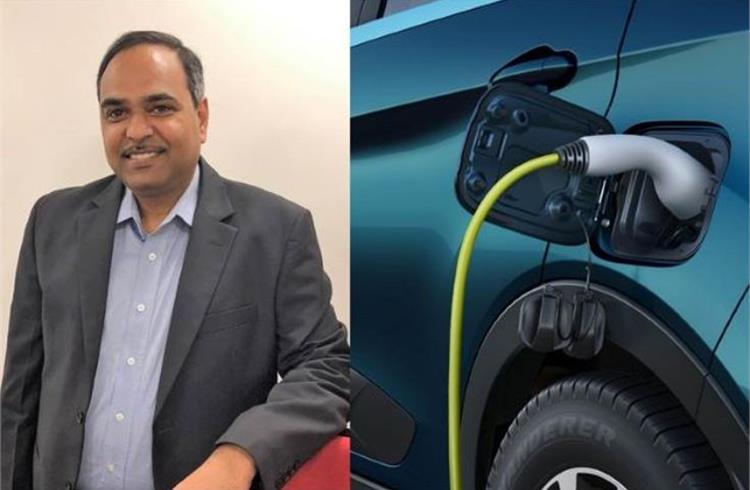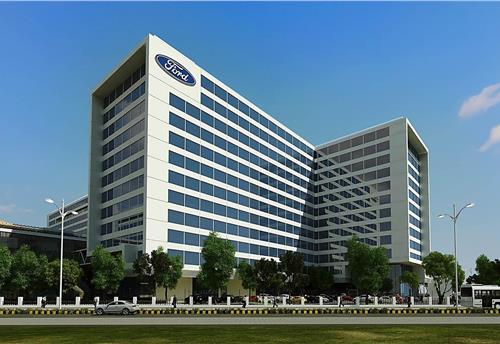Tata Motors to sharpen focus on electric, CNG
Tata Motors plans to pursue electrification “more aggressively” in the coming years to ensure that it is ahead of the curve.
Terming this decade as one of transition for the Indian automotive industry, Shailesh Chandra believes that it is important to “visualise the scenario” accurately and then take necessary action to be future-ready.
“We are sorted out in our thinking since we always see the destination point and one needs to consider milestones and journeys with certain visibility…the journey will continue beyond that,” says the Managing Director of Tata Motors Passenger Vehicles and Tata Passenger Electric Mobility.
The Centre already has a vision statement to achieve 30 percent electrification in the automotive segment by 2030. “As a company, we will naturally gravitate towards more electric vehicles (EVs) which means logical actions will follow,” he adds.
Ahead of the curve
Tata Motors plans to pursue electrification “more aggressively” in the coming years to ensure that it is ahead of the curve. In five years, it strives to be 20 percent electric compared to industry’s eight percent. “We are already at seven percent penetration and will target significantly higher than 30 percent by 2030,” says Chandra. The ICE (internal combustion engine) world will continue to remain the bigger part and the key is to leverage on that opportunity but invest with more eco-friendly technologies. “We are crystal clear on how to move in both worlds,” he adds. From Chandra’s point of view, it is critical to have a mix of short, mid and long-term goals owing to the reality that there are stages in which emission regulations will change. Oil imports are already weighing down heavily on India’s balance of payments (which have now worsened with the ongoing war in Ukraine) and retail prices of petrol and diesel will increase even further. This will compel customers to opt for less expensive options like electric which explains why Tata Motors is working towards being future-ready.
Increased focus on CNG
As Chandra says, the decade will also see an increased focus on CNG (compressed natural gas) which the company recently introduced in the Tiago and Tigor. The idea is to offer a “value proposition” in the backdrop of rising petrol prices accompanied by the fact that there are plans to increase its spread across the country. By 2030, with EVs taking a chunk of the portfolio, the 65-70 percent should comprise more eco-friendly options like CNG technologies.
According to Chandra, while CNG is now confined to Maharashtra, Uttar Pradesh, Gujarat, Haryana and Delhi, the retail network will grow this decade. If things go according to plan, CNG will replace diesel in the lower segments — use of diesel has, in any case, come down in passenger cars especially in hatchbacks and sedans post Bharat Stage VI. It is still relevant in bigger cars and SUVs where customers look for more power.
In the mid-term, reckons Chandra, engine capacities of less than 1.5 litres will move towards petrol/CNG while those in excess (of 1.5 litres) will still have diesel. In the long-term, though, diesel will come under pressure due to stringent emission norms like Euro 7 which will make their way into India. By this time, registrations and resale avenues will face headwinds and the superior torque in gasoline will fill the void apart from alternative powertrains like electric.
With CNG now an active component of its fuel basket, Tata Motors will closely track those districts where city gas initiatives are being planned and work on demand creation while launching CNG models. In cities with “ample CNG penetration”, hatchbacks of other manufacturers already account for over 70 percent. This only indicates that the potential is immense in other locations where residents depend on more expensive options like petrol. In the South, for instance, CNG is virtually non-existent and its availability will “unleash a big opportunity” especially in the commercial segment where tourism will benefit in a big way.
Likewise, IT companies in the South have large fleets to ferry their employees and they will be more than pleased to have CNG as a less expensive and cleaner option. “We will focus on electric as a primary long term powertrain option and on the ICE side, we will use CNG as a value proposition for customers and clean air,” says Chandra. Diesel will continue to play its role in certain segments along with petrol.
Additionally, the fact that the company’s trucks will explore options such as liquefied natural gas and hydrogen clearly implies that the car business will have access to these fuels too if they are deemed to be relevant enough. Synergies with Jaguar Land Rover in areas like electrification as well as advanced electrical and electronics architecture is yet another reminder that “there is a lot within the ecosystem to help us”.
Multiplier effect
Tata Motors will keep an eye on CNG’s application in other segments even while Chandra pointsout that “this is not something that cuts across all products”. It makes sense for smaller cars below a certain price point where there is greater customer sensitivity to running costs. He is doubly pleased with the response to electric where many buyers have now started considering this option. “They are waiting for feedback from early adopters before plunging into using this new technology,” adds Chandra. He is confident that electric will have a multiplier effect over time and more positive stories will only fuel the momentum. “This will help build a critical mass in the next 3-4 years which will be a pull phase,” he says.
Emission norms will make ICE vehicles more expensive and the price moderation of EV parts will keep costs in check to become self-sustaining. “The transition will be smooth and I do not see any disruption in growth of EVs,” says Chandra. Eventually, with more models coming in from other companies into the EV space, it will further increase the pull factor and subsidies can be gradually phased out.
The Tata Motors chief believes that the landscape could change with new options/concepts on plants and micro-factories/decentralisation. Factories of the future will involve a different architecture thinking that will need careful planning. “It will be a dynamic situation in this decade and we will actively look at these concepts too. It is difficult to predict the manufacturing model five years from now,” says Chandra. While the current architecture is in place and operating efficiently, “we see the power of future concepts which are more distributed”.
If architectures are aligned to distributed manufacturing and can unleash greater potential, Tata Motors will consider this option only after a deep understanding of the overall implications in terms of product concept and benefits. New experiments will be made along with fresh investments in capacities because this is a growing market by the end of the day.
In this dynamic scenario, Chandra agrees that coopetition (balancing cooperation and competition with an ally) is an important “lever to play on” where a partner with aligned goals and complementarity will help the cause of growth. “There is a lot happening this decade and new technologies will need multiple investments,” he says.
Ready for CAFÉ norms
The company is also “fully prepared” for CAFE norms within the timeline since “we support alleviation” of emissions. There has been stress on the OEMs because of the pandemic and Chandra insists that the company will go with a consensus view even while it is ready thanks to the deep penetration of electric.
The current war in Ukraine will be challenging for the automotive industry in terms of chip supplies as well as increasing prices of precious metals. Further, a price hike of petrol and diesel is not likely to go down too well with customers and this is more reason why Tata Motors will constantly push the envelope in finding cleaner and more affordable fuel options.
This article was first published in Autocar Professional's March 15, 2022 issue.
Read More
Tata Motors set to launch Tiago, Tigor CNG in January
Tata Motors introduces CNG Tiago and Tigor
RELATED ARTICLES
Uniproducts India targets 15% growth till FY2027, eyes new EV OEMs for NVH parts
The Noida-headquartered company, which is a leading manufacturer of roof liners, floor carpets, sound insulation materia...
Ford to build more EV software capability at Chennai tech hub
Ford Business Solutions India, which currently employs 12,000 personnel set to add 3,000 more; Ford, which is known to b...
ASK Automotive to set up JV with Aisin to sell aftermarket parts for cars
Ask Automotive will have 51% of the equity of the joint venture to be set up with Aisin Asia (Thailand) Company and Aisi...





 12 Mar 2022
12 Mar 2022
 25025 Views
25025 Views





 Autocar Pro News Desk
Autocar Pro News Desk




